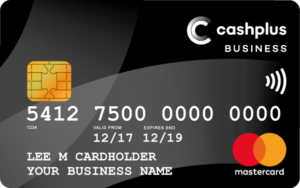One of the most important factors for any business is to maintain a steady flow of incomings and outgoings. As a business owner, you’ll quickly learn that any short-term disruptions could cause longer term problems.
Cash flow problems can sometimes happen, and if you do encounter them, there are some steps you can take to try and achieve a balance again. Keep reading for some basic guidance on how to improve cash flow.
Please note, this should be taken as high-level guidance only and is not financial advice. If you have concerns about cash flow issues, consider contacting an advisor.
9 steps to better cash flow
Forecasting
Knowing when money is going to come into your business, where it’s from and when it’s going to go out is important. Creating a detailed forecast can really help your business to manage cash flow.
Once you’ve done this, ensure that it’s working as well in practice as it did in theory. Make sure your forecast is aligned with your actual figures at the end of each month. And, if necessary, re-forecast. Completing these checks regularly can help you spot issues in advance, identify inefficiencies or see something that was overlooked in the first place – and ideally give you time to take relevant action. And perhaps if things are working out better than expected, you could decide how to best use, invest or save your increased profits.
Want to know more about cash flow forecasting?
Speed up receiving payments
Sometimes receiving money into your account can take a little longer than expected. On a small scale this can be manageable, but if you’re encountering problems with receiving payments regularly on a larger scale, you may want to think about what you can do to speed things up.
Evaluate payment terms
If you’re struggling to get paid on time, it might be wise to rethink the terms of payment you’re giving your customers. Some simple ways of doing this are:
- Shortening your payment terms. For example, from 30 days to 14
- Including ‘Due Upon Receipt’ on your invoices (instead of ‘Payment Due Within 30 Days’, for example)
- Depending on your customer/industry, request a percentage of the payment before you start any work or deliver anything
Online invoicing
Some accounting software can automatically send out invoices for both regular or ad hoc payments, as soon as they’re due, and prompt customers automatically if a payment is overdue1.
If expenses are a part of your usual invoices, you could speed up the process by attaching digital copies of the receipts along with the bill.
Accepting online payments
If it’s appropriate to your type of business, consider providing a function that allows your customers to pay you securely online. Online payments are convenient, you could increase sales and, in turn, improve cash flow by cutting out the lengthy delay involved with sending out invoices and waiting for payment to be received.
Careful use of credit
Business loans, overdrafts, credit cards or another line of credit could help with any issues with your cash flow. Having a safety net will help put your mind at ease should you have an unexpected bill, a purchase that you need to pay for, or a customer who’s late with their payment. Make sure you consider different types of credit that are available, as some are relatively expensive and not appropriate for long term borrowing e.g. credit cards.
Checking customer credit history
Depending on the nature of your business, it may be wise to check who you’re doing business with before delivering goods or providing services without securing payment up front. If you’re concerned over customers defaulting on payments, there are some proactive measures you can take to minimise this risk:
- Use business credit checking agencies: For large orders, it may be worth paying for a credit report on the customer, so that you have a good idea of how safe it is to do business with them. There are a few websites that offer this:
- Experian
- Equifax
- Creditsafe
- Graydon
- TransUnion
- Consumer credit reports: If you’re working with a small business, run by a sole owner, checking their personal credit rating could help give you an insight into how likely the business is likely to pay promptly. The three main agencies for consumer credit reports are Experian, Equifax and TransUnion.
Get contact information
Make sure you’re getting full contact information about the person placing an order with you as well as the name, phone number and email address of the person in the accounts department who will be responsible for paying you. That way you can chase up payment more effectively.
Cost cutting
Although having one supplier can sometimes be convenient, shopping around for the best deals can help save you money. Your main supplier could have the best price on an office photocopier, but you could find a better deal on ink and paper elsewhere. And, why not check out comparison sites to ensure that your business is getting a competitive deal on the energy it uses? Some Business accounts even offer cashback, which could help you save that little bit extra on stock purchases. Find out more about cashback offers at the bottom of this page.
A healthy cash flow is critical to any business. Careful planning from the start will give you a better chance of success, but if you do encounter problems, we hope the steps in our guide will help give your cash flow a boost.
Want access to more handy business guides? Our friends over at Cashplus have a Community Site that is filled with insightful information. Or perhaps you’re still on the lookout for a Business Current Account! Pay bills, track spending, and connect to online accounting software for real-time updates and account management. Smart, simple and fast current accounts for freelancers, start ups and small businesses. And to add to all those excellent features, they’re even offering cashback on card purchases for smallbusiness.co.uk readers that apply via this link.
Click here to find out more about the Cashplus business current account and apply.

Read more
Five things to remember when cash flow forecasting for your business





